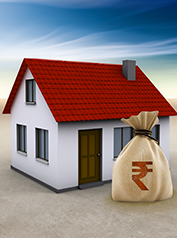
Among the most significant cornerstones in the economy of India is the real estate business. The real estate industry generates approximately 6-8% of India's GDP and is second only to the IT industry in terms of job creation. It was implemented with the sole intention of simplifying compliance and preventing tax cascading. However, the goal appears to have been achieved, at least GST in the real estate sector.
Homebuyers must pay the required GST on their capital investment in addition to property taxes as part of their tax duties. The GST regime has undergone several adjustments in recent years that are specifically targeted at the real estate industry; to make a sound decision about investing in this industry, prospective buyers and investors must carefully consider the effects of GST on real estate.
Before the introduction of the GST, home buyers were required to pay several taxes, such as stamp duty, VAT, service tax, fees for registration, etc.
Applicable Duty |
Tax Rate |
|---|---|
VAT |
1% to 4% |
Service Tax |
4.5% |
Registration Charges |
0.5% to 1% |
Stamp Duty Charges* |
5% to 7% |
The above-mentioned taxes were applicable on the sale of housing units that were under construction. The registration charges, stamp duty, and VAT costs differed from one state to another.
With the implementation of the GST on real estate, only properties that are still being built require taxation. Notably, properties that are finished or ready for sale and have a valid Completion Certificate are exempt from GST. Let’s have a look at the applicable GST rates on real estate.
Particulars |
GST Rate |
|---|---|
Resale Properties |
- |
Properties under construction (under credit-linked subsidy scheme) |
8% |
Properties under construction (excluding the previous) |
12% |
Ready to Move Properties |
- |
Land purchase and sale |
- |
Composite Supply of works |
18% |
Works contract |
18% |
Composite supply of works to Govt Authority |
12% |
Composite supply of works contract for affordable housing |
12% |
Composite supply of use for the general public |
12% |
The ITC system, which distinguishes the GST law from India's prior tax structure, is one of its distinctive features. A developer of real estate incurs various tax payments on the acquisition of goods and services during a housing project. The builder would receive an input tax credit under the GST system when he paid his output tax.
Example: A developer must pay tax on his finished product of Rs 25,000. When buying goods like steel, cement, paint, etc., the builder already paid Rs. 21,000 in input tax. After correcting for the input tax credit, he would only be required to pay Rs 4,000 in output tax in this case.
The reverse charge mechanism, or RCM in GST, is a way for the receiver to pay tax rather than the supplier. Reverse charge is defined as the obligation to pay tax by the receiver of the provision of goods or services or both instead of the supplier in section 2(98) of the CGST Act of 2017.
Using the reverse charge mechanism is appropriate if:
Imports - In addition to other import charges, the tax on the import must be paid to the government using a reverse charge system.
If goods or services, or both, are purchased from an unregistered dealer, the registered person will be responsible for paying the tax if the unregistered dealer sells the products to a person who is registered for GST.
In the case of exempted suppliers, there is no RCM. Since it is nearly impossible to collect taxes from an unregistered individual, the idea of RCM is to combat tax evasion. All of these provisions only apply to registered people.
Other provisions of the products and services mentioned. such as a director of a business or other corporate entity, an attorney, an insurance agent, etc.
Readily available properties do not belong to the category of goods or services, according to schedule III of the GST Act of 2017. It resembles a property buy or sale more than anything else. Because of this, ready-to-move properties with valid Completion Certificates are exempt from GST.
Individuals won't be forced to pay GST on land sales and purchases of resold properties, either. Real estate developers are also qualified to claim the GST system's Input Tax Credit on building supplies in addition to the aforementioned exemption. Notably, developers must fulfill a few requirements to obtain these benefits. For instance, to move forward with the claim, developers must:
Submit the construction materials' invoices and receipts.
Goods and services must be provided to the developer.
Personal use claims for products and services won't be taken into consideration.
All outstanding debts must be paid.
GST must be correctly reported.
Multiple indirect taxes were merged under the GST to give taxpayers a unified system. The GST regime's real estate tax category has seen several revisions since it was first introduced.
Home buyers still being built had to pay the Stamp duty, Service tax, VAT, Registration fees, and also Service tax, under the previous tax system. Additionally, because VAT, Registration fees, and Stamp Duty were state taxes, property values differed from one state to the next. Additionally, developers were required to pay several taxes such as sales tax (CST), customs duty, OCTROI, and others for which there was no credit available.
In contrast to the previous law, the GST is no longer applicable to finished or ready-to-sell houses and instead has a fixed tax rate of 12% for properties that are still being built. As a result, consumers will profit from GST price reductions.
Shortly, purchasers might adopt a "wait and watch" strategy to learn more about how the GST will affect home prices and postpone making a purchase. Additionally, if buyers enjoy the benefits of the developer's input tax credit, the Goods and Services Tax will benefit them in the long run.
Developers needed to pay Excise duty, VAT, Customs and excise, Entry taxes, etc. on inputs and raw materials under the previous tax system, as well as the Service tax on a variety of input services such as architect professional fees, approval fees, labor costs, legal costs, etc. For taxes such as the CST, customs duty, etc., ITC was not available. This would affect an effect on the price, and the customer would then bear the burden.
Due to the integration of different tax slabs in GST and the accessibility of input tax credits, developers' building costs are greatly decreased. Additionally, a decrease in logistical costs will be advantageous. Therefore, developers can notice an increase in margins.
The drawback is that developers must perform numerous calculations to determine ITC before passing it on to customers. Therefore, they can typically only transfer the ITC at the last stages. Because of the ITC's lack of transparency, potential customers may choose to "wait and watch" before making a purchase, which could hurt developers.
Residential property will be recognized as such for purposes of the GST if it contains no more than 15% commercial space.
A business entity must comply with 12% GST.
Landowners are only required to pay GST if the tenant has a business.
On services for house loans, such as legal fees and processing fees, GST is applicable.
Houses that are still being built are less expensive than those that are ready for habitation, even after applying GST.
In India, buyers of under-construction flats, residences, and bungalows must pay GST of 1% for low-cost housing & 5% for non-affordable property. The purchase of buildable real estate plots is likewise subject to the GST.
A residential unit would only be subject to GST if it was rented to a business entity.
Yes, the total cost of the charges could be somewhere between 7% to 10% of the property's total market value.












